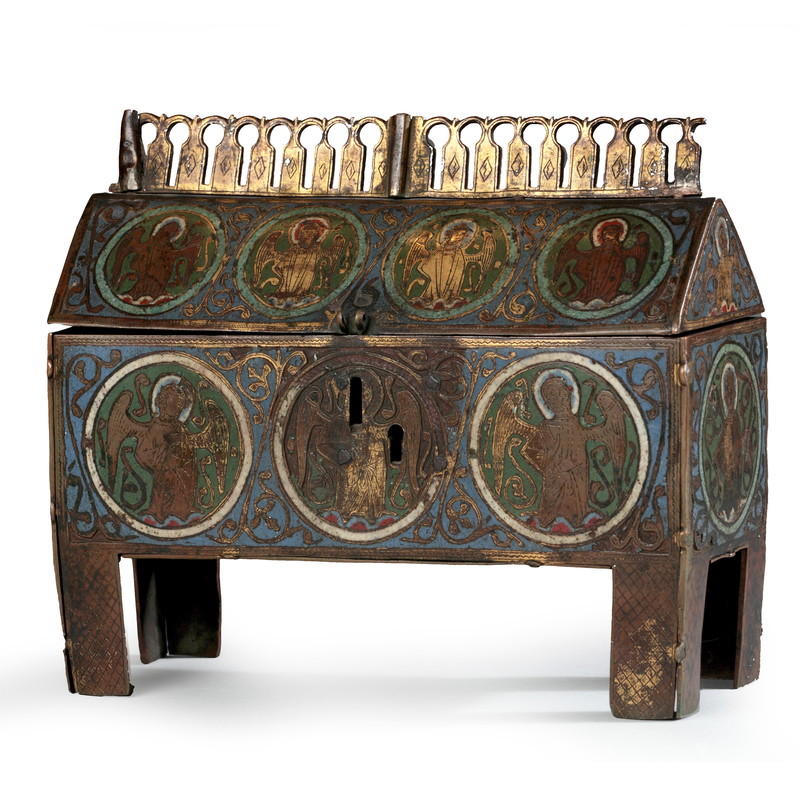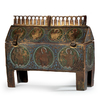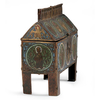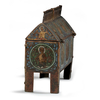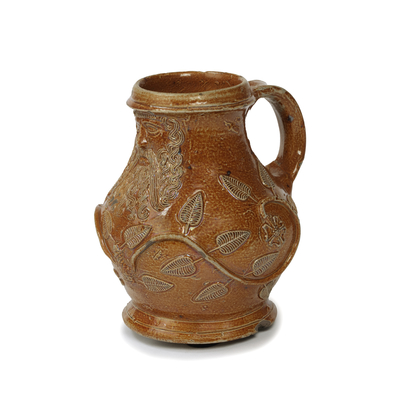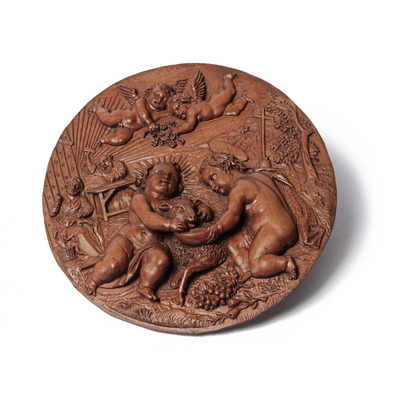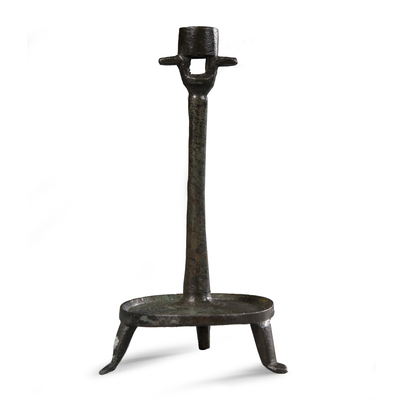Limoges champlevé email reliquary casket
Global shipping available
- Origin
- Limoges, France
- Period
- Late 13th century
- Material
- Champlevé enamel, partly gilded copper
- Height
- 19 cm
- Width
- 23 cm
- Depth
- 9.5 cm
- Literature
Enamels of Limoges 1100 - 1350, New York 1996, p. 388, 389.
M. Nijhof, Catalogue des sculptures, tableaux, tapis etc. formant la collection d'objects d'art du Musée van Stolk, La Haye 1912, p. 85.
L. Timmermans, ‘Een collectie met internationale allure: Limoges email verzameld door Jan Herman van Heek’ in: M. Brower & A. Vels Heijn, Nieuwe avonturen met een collectie, ontdekkingen in de verzamelingen van Huis Bergh, ‘s-Heerenberg 2019, pp. 23 - 35.- Museums
Similar caskets:
Metropolitan Museum of Art, New York, inv. no. 17.190.329.
Huis Bergh, inv. no. 555.
Questions about this object?
Please use one of the contact options below:
Description
This rectangular partly gilded reliquary is decorated with enamel in the champleve technique. The casse was made in Limoges, a French city that was one of the most important European centres of enamel production in the twelfth and thirteenth centuries. The shrine was used to preserve small relics and has a recognisable architectural form. The rectangular base rests on four legs made of copper plates decorated with an engraved diamond pattern. On this blue enamelled base are six medallions, three on each side, depicting angels ascending from a low clouds. The angels bend slightly to the sides. The angels with coloured aureoles are made of gilt and engraved copper against a background of green enamel. On the sides of the base are two medallions, in which the apostle Paul, with double-edged sword, and the apostle Peter, with the key to the gate of heaven, are depicted. They are portrayed in the same manner as the angels; against a green background and with clouds at their feet. Between the medallions is a curly border. The hinged tent-shaped lid depicts eight angels in green medallions, rising mid-height from the clouds. Between these medallions, which are smaller than the ones on the base, is the same scroll work as on the base. On the sides of the lid are two angels, without medallions. On top of the lid is an openwork comb of gilt copper, engraved on one side with a diamond pattern and on the other with a dotted border. In the middle and on both sides of the comb there was probably originally a raised cross, beads or other kind of decoration, as in other reliquaries from Limoges. The copper plates are fastened together with rounded gilt nails. The lock is missing.
The enamel production in Limoges reached its peak in the twelfth and thirteenth centuries. An image was gouged in copper, after which the concaves were filled with a mixture of glass powder. This was heated, resulting in an opaque surface. The, mainly religious, objects that were made with this technique radiated luxury and opulence; the gilded copper and glass were reminiscent of gold and precious stones.The enamel production in Limoges grew strongly, partly due to the nearby monastery and the pilgrimage route to Santiago de Compostela, which passed through the city. The reliquaries were in great demand by pilgrims, and thus had a large distribution area.
In the collection of the Metropolitan Museum New York is a very similar casket, inv. no. 17.190.329, and also in Huis Bergh there is a very similar one, without a comb, inv. no. 555.
